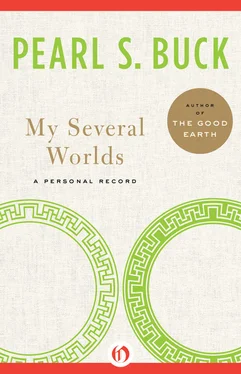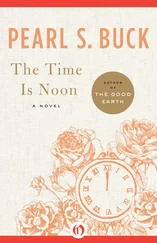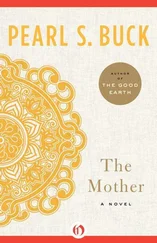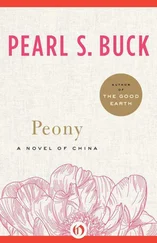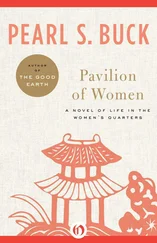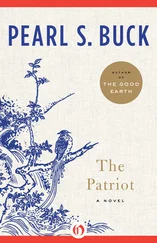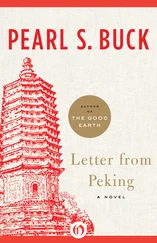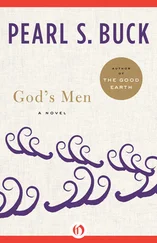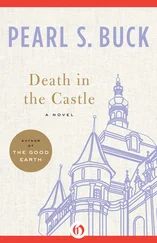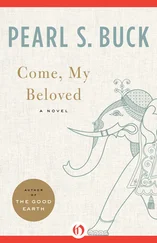Yet why dwell upon such matters now? Pictures improve, I daresay, and later in that same day the people on the set had their chance to laugh at me, too, when they produced the water buffalo which had been an important character in the filming of The Good Earth and now had become a sort of pet. I suppose they thought I would fall affectionately upon the beast’s neck but I did not. I remembered that water buffaloes in China have a deep prejudice against white persons and will always attack if they can. It was as much as I could do to put my hand on this one’s horn for a photograph. We eyed each other with mutual distrust, I because he was a water buffalo, and he eyed me because he smelled my fear, and was stirred by ancestral antagonisms. Meanwhile the Americans watching us laughed heartily and I let them laugh. And this brief and single visit to Hollywood brings to my memory the strange story of the filming of The Good Earth. I have always disliked mystery stories in which the villain is an Oriental of unknown and sinister character, just as in my childhood I used to dislike the crude Chinese plays where the villain was always a Western man with blue eyes, a big nose and red hair, yet — well, here is the story, and in time it properly begins in that last winter which I spent in the old city of Nanking.
When the stage version of The Good Earth , prepared in 1932 by Owen Davis, was sold by the Theater Guild to Metro-Goldwyn-Mayer, I wished very much that the chief characters in the motion picture could be played by Chinese actors, for the stage play had convinced me that it was impossible for Americans to portray the parts of Chinese with any reality. Nazimova, who took the part of O-lan, was a brilliant exception, but she had some background in Eastern Europe which gave her an almost Asian grace of movement and pose. I was told, however, that our American audiences demand American stars and so I yielded the point, as indeed I had to, for I had no control over the matter.
As soon as I reached Shanghai, the representative there of Metro-Goldwyn-Mayer came to see me in a state of despair. He had been sent to take preliminary photographs of scenes and people and he had found himself frustrated at every attempt. Finally his studio was burned down by unknown persons and he was giving up and returning to the United States. There are “forces,” he said, who did not want the picture made at all.
“Forces?” I inquired, unbelieving.
He nodded and went away without explaining. Later, I heard that he had committed suicide before reaching the United States, although not, I believe, from artistic frustration but from some private and domestic tragedy of his own.
I discovered, as the months passed, that the “forces” were familiar enough, for they were simply the prickly inverted patriotism of some members in the new government who did not want an authentic film made of Chinese villages and peasants lest it might provide unflattering views of China to foreign audiences abroad. I had a certain amount of sympathy with this, and so I declined at once any association with the making of the film, for friendly relations were more important to me than its success. Nevertheless, during the winter I heard a great deal about the making of that film, and I read of it, too, in Chinese newspapers. For a company was sent from Metro-Goldwyn-Mayer complete with cameras and technical equipment, and the story of their travail was relayed to me regularly by my friend the American Consul, who was compelled in the course of duty to be the mediator between the American motion picture group and the Chinese authorities, who objected at every step, and even after mediation, unwillingly acceded to, insisted upon dressing up the villages before pictures were allowed. Every woman, I heard, had to appear in clean clothes, and wear a flower in her hair, the rugged streets had to be cleaned and the houses decorated. The authorities even tried to substitute a modern American tractor, a machine that few Chinese had ever seen, for the redoubtable water buffalo who was an essential character in my story. If I heard the American side of the troubles from the Consul, I had the other side from editorials in the Chinese papers, which ran something like this:
“We fear that in spite of our government’s every precaution, there will be some child in this film with an unwashed face or some farmer’s wife with a dirty apron.”
My sympathies were with both sides by now, and I kept a prudent silence and followed my usual pursuits. It was only after the motion picture was finished and shown and I was living in the United States that I heard of the incredible ill luck that dogged its making. One misfortune followed another until the tale became a legend. It was told to me by a member of the company, and proceeded from minor accidents too numerous to mention to the major disaster of discovering, when the company left China to come home, that most of the film material brought back from China in tin containers had somewhere along the way been destroyed by acid, so that of the entire length of a long film, as it was eventually shown, only about twelve minutes was composed of the original photography taken in China. Even the famous locust scene was made in one of the Western American states, where an opportune locust scourge supplied the necessary local color. The final tragedy was of course the death by sudden illness of the brilliant director, Irving Thalberg, leaving the picture uncompleted.
His successor confessed to his own secret fears one evening when the picture was finished, or so I was told, and at the moment he happened to be standing by a chimney piece in his house, or in some other, and as he spoke an immense and heavy-framed portrait fell from above the mantelpiece, narrowly missing his head.
My own memories of the film are not so sinister. I did not go to the opening although I was in New York at the time, for I dreaded the fanfare and publicity. I waited for a few days and then my husband and I went quietly to the theater and took seats in the gallery. It is an amazing experience to see the characters one has created come alive on the screen, and I was much moved by the effort that had been made, especially by the incredibly perfect performance of Luise Rainer as O-lan. She not only looked like a Chinese woman but she moved like one and every detail of action, even to the washing of a rice bowl, was correct. When I asked her how she had accomplished this, she told me that she had chosen from among the many Chinese employed on the set for the crowd scenes a young woman whom she thought most like O-lan. She had then followed this woman everywhere, watching her until she felt identified with her. When later the film was shown in China, as well as in other Asian countries, where incidentally it was a great success, Chinese friends wrote to me of their surprise and appreciation of Luise Rainer, marvelling, as I had, at the miracle of her understanding.
As for the evening at the New York theater, when I got up to leave my seat after the picture was over, I heard a gusty sigh from behind me and a hearty male voice said: “Well, it’s a good show, but I’d ruther see Mae West.” I knew what he meant. I had seen Mae West, but in a small crowded theater in Java, and hearty males had enjoyed her there, too!
Now and again during these years I have taken the children to see the house where I was born in West Virginia. It stands back from the road in the shelter of the mountains looming behind it, and it belongs to another family, a friendly one, to whom my first cousin went in sad distress, decades ago now, when speculations forced him to sell the homestead he had inherited from my eldest uncle who had it from my grandfather, in old-fashioned primogeniture. I am glad that friends live there but nevertheless the house is sorely changed. It needs paint and carpentering and the great old trees are gone, although the wisteria vine still hangs from the pillared portico. Inside, the house is entirely changed, only the shape of the rooms remaining. The formal old life that I can remember is no more.
Читать дальше
